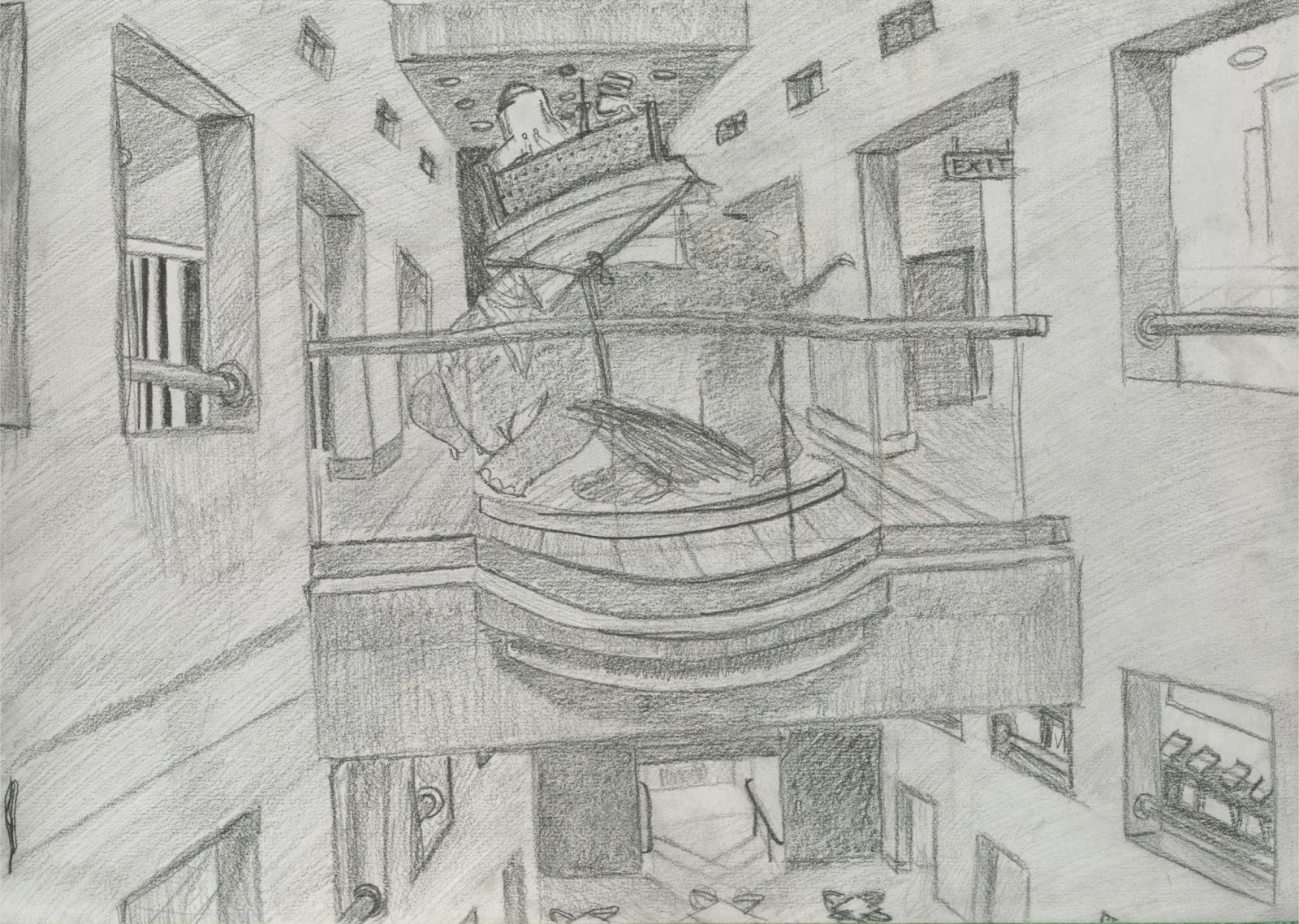This set of images shows two models wearing a Stormtrooper costume and a Boba Fett costume respective. These were drawn in free time before the assignment, but as they are figure drawings I thought I would include them. The first one has a good sense of foreshortening on the left arm, but there is a slight proportional fault in that the head/helmet is slightly too big in comparison to the body.
The second is a 5 minute drawing, and at the time I was new to figure drawing so there isn't as much detail than I would be able to achieve nowadays. That said it is in good proportion for what it is.
The third and fourth drawings are of the same pose but from different vantage points. The third drawing is pretty well done, though the left leg is a little off. The fourth drawing also has slight error with the feet, though is the better of the two. There is a implied line down from the helmet down the right down and down the left leg.
Before this assignment I was but the Learner, and I am still yet to be the Master.
















